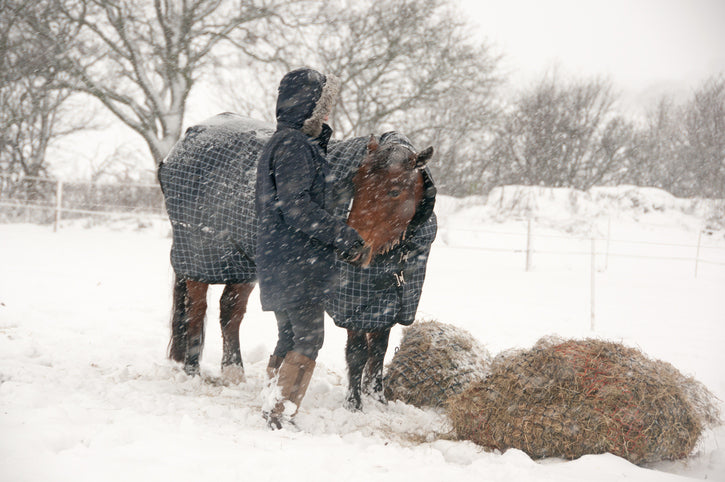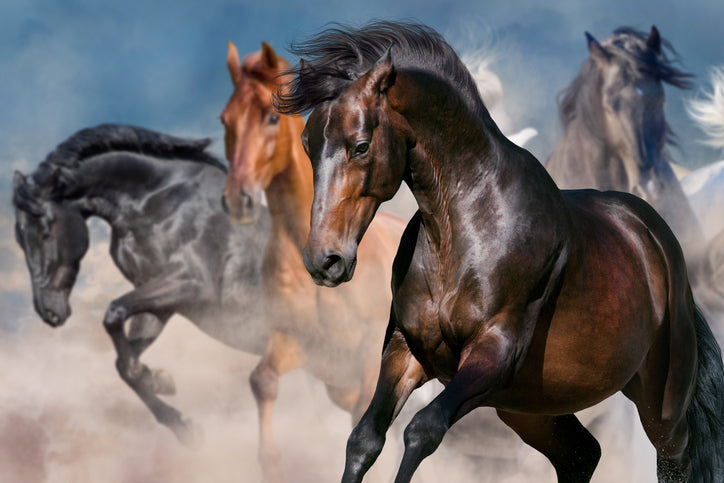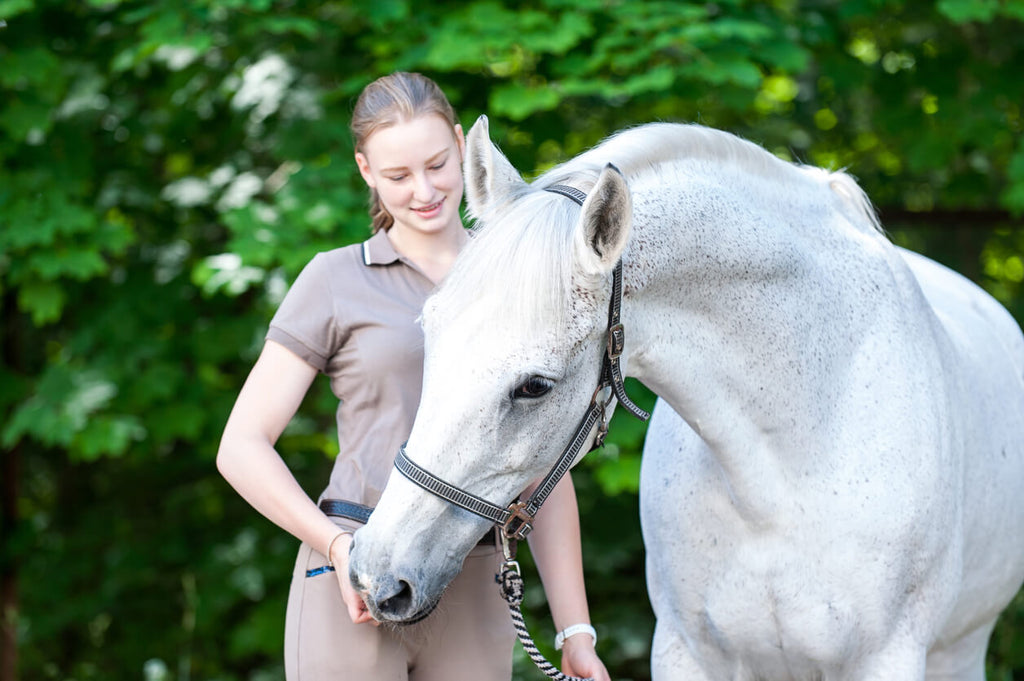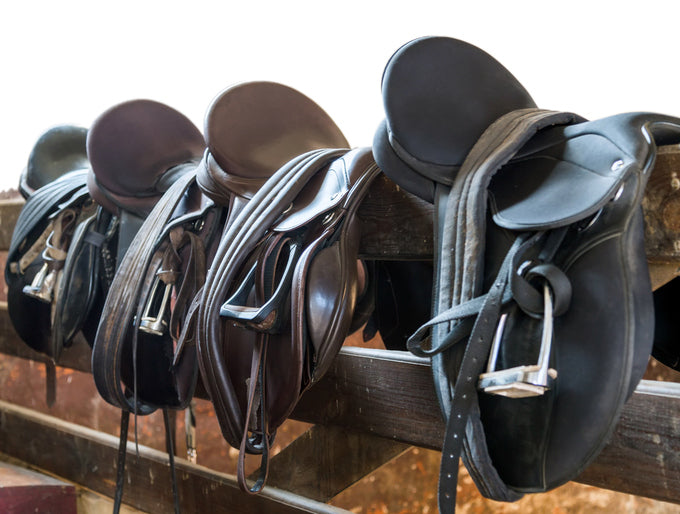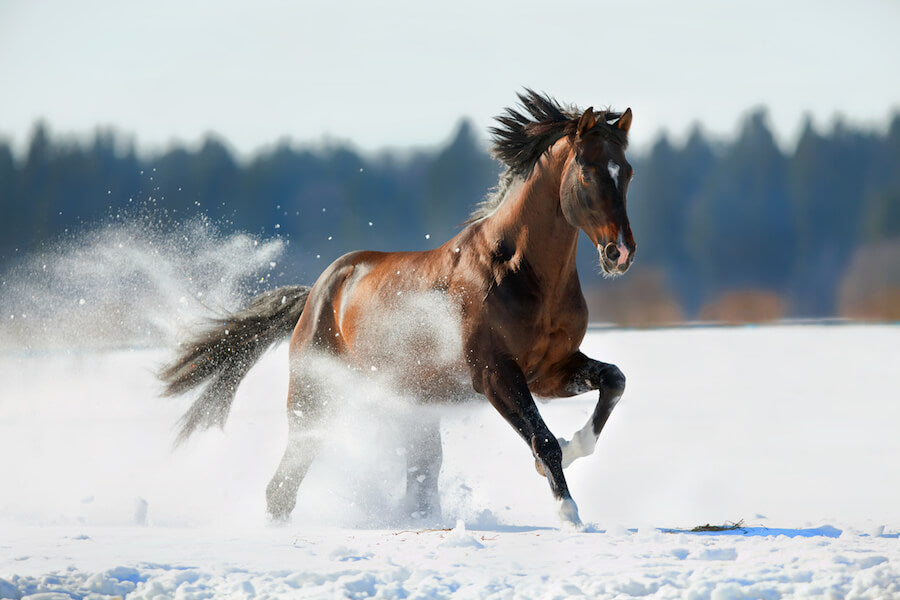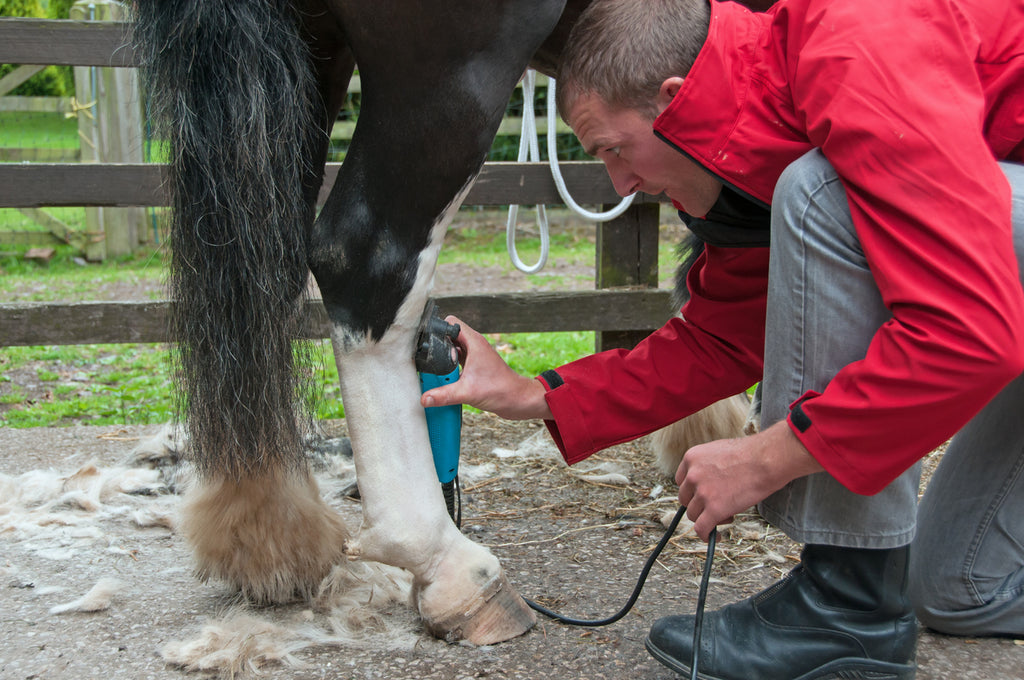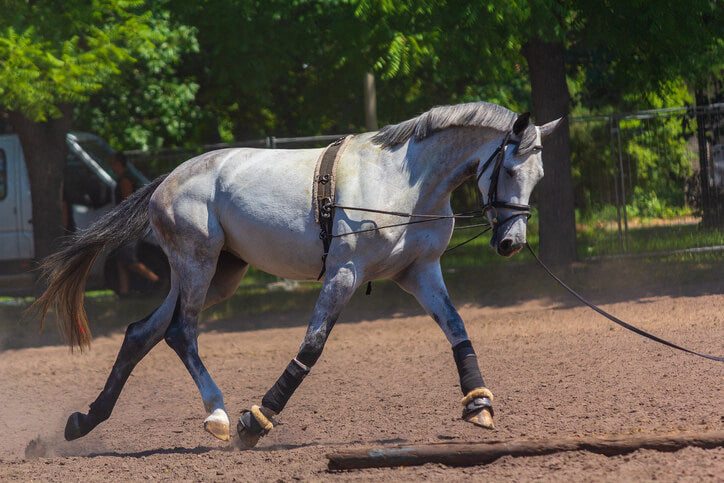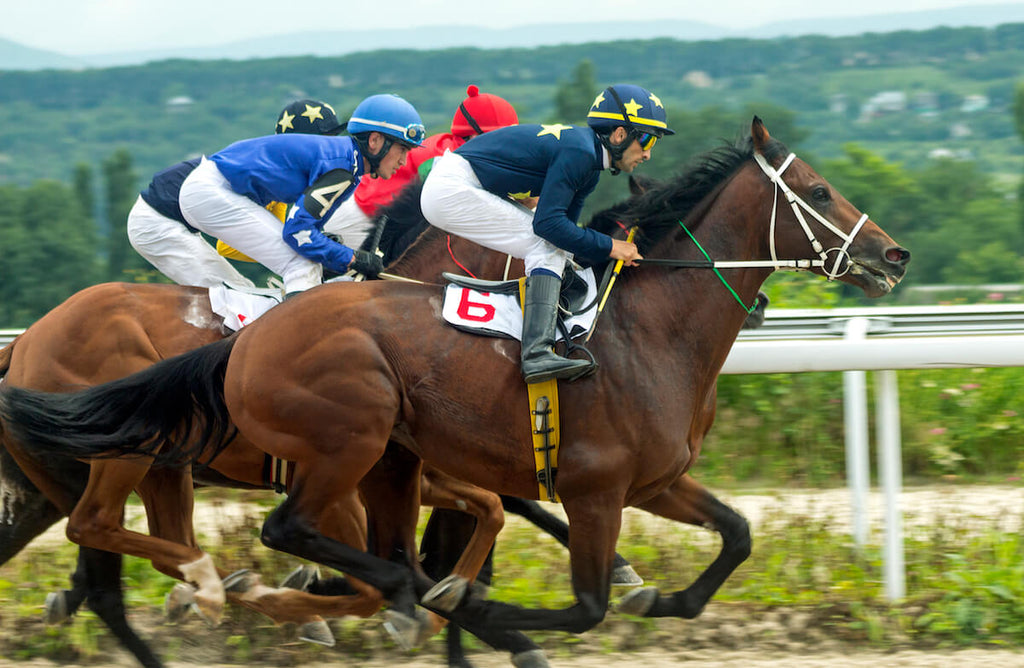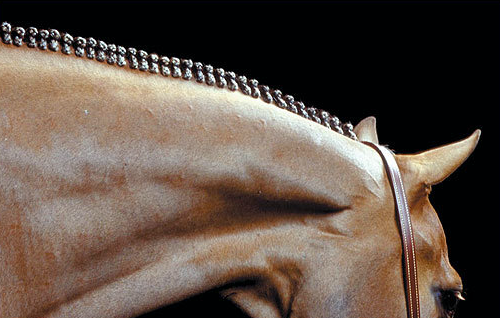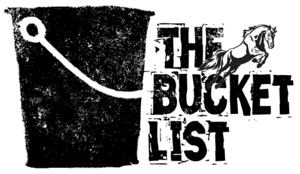Hundreds of off-track Thoroughbreds, each with 10 months or less of retraining and three days of competition in 10 different disciplines are each vying for a share of $100,000 in prize money. Thousands of spectators are watching online and in person, and at the end, one overall winner will be crowned America’s Most Wanted Thoroughbred.

What is the Thoroughbred Makeover?
The Retired Racehorse Project or (RRP) is a charitable organization, created the Thoroughbred Makeover to showcase the trainability and talent of off-track Thoroughbreds. The competition is intended to inspire good trainers to become involved in transitioning these horses to second careers, and the National Symposium serves to educate the people involved in the care, training, and sale of these horses to responsible owners.
This is the only national gathering of the organizations, trainers, and farms dedicated to serving these horses when they retire from racing.

Who can participate?
The Makeover isn’t an ordinary horse show; it’s a training competition. Trainers interested in participating must submit an application to the RRP Makeover Selection Committee for approval, to ensure that all participants are capable of effectively restarting an off-track Thoroughbred and demonstrating its talent and trainability. Participants do not need to be professional trainers, juniors and amateurs are welcome.
Trainer applications closed on January 15 with a record 812 applications! Accepted trainers were announced on February 1.
When evaluating applicants, the selection committee takes into consideration the need for adequate representation within each discipline; the need for representation by professionals, amateurs, and juniors; geographic diversity; affiliation with institutions that are committed to RRP’s mission; and evidence that the trainer is committed to RRP’s mission.
Trainers may compete up to two horses apiece, but do not need to have obtained the horse they intend to compete at the time of application.

![]()
What horses are eligible to compete?
Because the Makeover is a training competition designed to evaluate a horse’s progress in a prescribed period of time, the eligibility requirements are set to ensure that all horses are of similar experience at the starting point. Horses must meet these requirements to be eligible:
-
Registered with The Jockey Club and have a lip tattoo or microchip.
- Raced or had a published work on or after July 1, 2016.
- Not have started in training for a second career before December 1, 2017 (other than a maximum of 15 allowable rides).
The RRP has a strictly enforced horse welfare policy in effect at the competition, which covers horse protection, abuse and neglect, soundness, and body condition. Trainers agree to adhere to the United States Equestrian Federation’s Guidelines for Drugs and Medication, and random testing will take place.
How is the competition structured?
Ten competitive disciplines are offered at the Makeover: barrels, competitive trail, dressage, eventing, field hunters, polo, ranch work, show hunters, show jumpers, and freestyle (a free-form division to demonstrate skills of the trainer’s choice). A horse may be entered in up to two disciplines.
First, the preliminary round where each competitor receives a preliminary round score, and the top five in each discipline advance to the finale, which takes place in the Covered Arena and is broadcast via Livestream.
Each discipline competes separately in the finale, and each has their own final test to determine the Makeover Champion in that discipline. The crowd favorite (determined by text message voting) from among the 10 discipline winners is then crowned America’s Most Wanted Thoroughbred and earns a $10,000 check!
What does the National Symposium include?
They offer several educational seminars and panel discussions dedicated to the care, training, and marketing of off-track Thoroughbreds. They also offer several mounted clinics that are open to Makeover competitors.
An extensive vendor fair also runs concurrently with the competition.
What is the Makeover Horse Sale?
Many Makeover trainers take on off-track Thoroughbreds as resale projects, and the Makeover provides a unique opportunity for horse-shoppers to see dozens of thoroughbreds successfully competing in a second career, and all in one location.
The RRP has endeavored to help market and facilitate the private sale of these horses by highlighting them at the competition. There they wear special bridle numbers, are advertised on their website, and a printed sale catalog is available to spectators. Designated areas are available for shoppers to try sale horses, and local veterinarians are on stand-by and available to perform pre-purchase exams on site.
About one-third of the horses competing in 2017 were available for sale. All sale contracts are private but are required to include no-slaughter and notification of resale restrictions.
Fast facts about the 2017 Thoroughbred Makeover:
- 578 trainers were accepted to compete during the initial application process, and 509 horses were registered.
- 305 horses actually made it to Kentucky to compete, coming from 38 U.S. states and two Canadian provinces.
- The most-raced horse in the competition had 85 starts. The highest money-earner had career winnings of almost $1.2 million.
- Total number of horses in each discipline: barrels, 18; competitive trail, 64; dressage, 78; eventing, 90; field hunter, 30; freestyle, 38; polo, 11; show hunter, 84; show jumper, 75; working ranch, 12.
- 100 horses were entered in the Makeover Sale, and 22 were confirmed sold within a month of the competition. The high price was $21,000; the average price was $8,800.
- More than 115 volunteers helped staff the competition.
- 72 companies were Makeover sponsors.
- 71 vendors took part in the vendor fair.
- Over 1200 ticketed spectators watched the Finale.
- The finale Livestream had more than 7,200 viewers, and 62,000 viewers watched on Facebook Live.
- 899 votes were cast for America’s Most Wanted Thoroughbred.
Overview
The Thoroughbred Makeover is a $100,000 competition in which hundreds of trainers acquire a recently retired racehorse and prepare it over a period not to exceed ten months for competition in one or two of ten riding sports. Formats for the competition are designed to test the quality and progress of each horse’s training.
The Thoroughbred Makeover and National Symposium takes place at the Kentucky Horse Park October 4-7, 2018. It includes seminars, sponsor fair, horse sale, and the Thoroughbred Makeover itself.
The Thoroughbred Makeover and National Symposium is organized by the Retired Racehorse Project (RRP), a 501(c)3 charitable organization dedicated to facilitating placement of Thoroughbred ex-racehorses in second careers.
Mission and Goals
The RRP created the Thoroughbred Makeover to showcase the trainability and talent of off-track Thoroughbreds, and to inspire trainers to secure the futures of these animals through training. In addition to benefiting the horses, the makeover is intended to help trainers establish themselves professionally or as amateurs in their respective disciplines. Without good trainers, Thoroughbred racehorses cannot become great riding horses.
The Makeover also serves as the only national gathering of the organizations, trainers, and farms dedicated to serving these horses when they retire from racing. The event will evolve over time to meet the needs of these groups.
Horse shoppers! Instead of spending multiple weekends driving hours away from home to see one horse (or maybe two or three if you’re lucky) at a time, plan a trip to Kentucky for the Thoroughbred Makeover. Dozens of off-track Thoroughbreds, many with professional trainers, that have all been restarted in various disciplines. You can see, try, and buy, all on-site and all in one weekend!
At the 2017 competition, approximately one-third of the 300 horses competing were for sale. Twenty-two of those were confirmed as sold within a month of the competition, with prices ranging from $3,000 to $21,000. To date, the average sale price of 2017 Makeover horses is $9,100.
“This is a great place to shop for young horses with upper-level potential,” said eventing professional Bill Hoos at the 2017 Makeover. “Usually you have to travel to California to look at one horse, Canada to see another. Here you see so many in one spot. This is a great horse shopping opportunity. It makes things much simpler and easier."
The Makeover horse sale is not an auction — all sales are private contracts between the buyer and seller. RRP is not involved in the sale and does not receive any commission.
Sale horses are designated with special green bridle numbers, and they also provide a sale catalog with photos, pedigrees, and descriptions, as well as the seller’s contact information and the horse’s stall number and ride times. You can arrange to see horses before the competition begins, and watch them warm up and compete.
Buyers can arrange for trial rides (usually after the competition is over), and veterinarians from the Hagyard Equine Medical Institute are on-call to perform pre-purchase exams during the Makeover.
Competing trainers who decide to participate will enter their mounts in the sale approximately six weeks before the event. Sale horses will be listed on the website and promoted on RRP’s social media. Some horses may sell even before the event takes place.
For more information contact Retired Racehorse Project.


